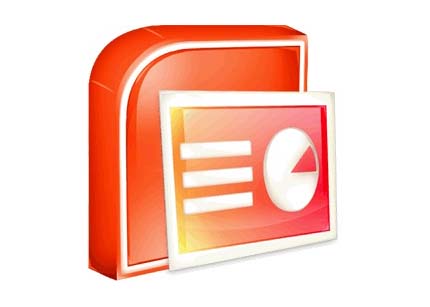4 Actions To Exorcising Your Ex From Demons In Past Relationship
How difficult can it be to get over a past relationship? If there was a way to erase memories of your ex girlfriend or ex boyfriend, then perhaps you wouldn't be haunted for many months or years to come. Since that's not going to happen, all you can do is try to work on getting beyond it. Just follow the actions below on exorcising your ex to get rid of demons from a past relationship.
Eliminate All Contact
Your first action is putting an end to any and all communication with your ex, whether you or your ex is doing all the calling and/or texting. If your goal is to get over your ex and move on with your life, then all lines of communication must cease and desist. Otherwise this level of communication will just remind you of the break up and lead your to heart break hotel.
Build a Support Group
The second action requires that you build a support group. Talk to those close to you such as friends and family members about your circumstances. They will be more inclined to help you meet your goal while you work on your emotions. People close to you will also be in your corner when feeling a bit vulnerable and weak. So use their support to your advantage and stay on track to get over your ex.
Acknowledge your Feelings
This third action is the process where you recognize your feelings. It's hard to ignore what happened to you or erase the love relationship you once had or avoid coping with the emotional stress from it all. But somehow, someway you must cope with whatever you are going through right now. When things get a bit too emotional talk to your support group. The more you open up the more you release your emotions. This will be an acknowledgement to your feelings which is the fastest course to take when going through the process.
Get Them Out
The next and final action is releasing your emotions. Each and every person has a very unique way of coping with emotions. Some individuals will undergo a hard and rigorous workout or even boxing routine to control their anger and stress. Others will work more, write a diary, or do something else to deal with the pain inside. This should be a part of your regimen when trying to get all your emotions out. Start getting them out now so that you can get over your ex



















Having the willpower to follow through with these actions are extremely important. Crying on your pillow while walloping in self pity isn't the answer... it doesn't help!
Some individuals may find these steps a tad difficult to follow when trying to remove a relationship out of their lives. You might be one of them but understand that you will be hurting yourself at great length if you don't put these actions into play. Initially, you will probably have to push yourself with each action for exorcising your ex. Getting rid of demons from your past relationship in the fastest possible way will be well worth the effort over time.
How To Make The Most Out Of a Pension Fund
Living in such a harsh economic environment makes it difficult to achieve financial stability during the retirement days. People spend an entire lifetime saving money and yet it seems that is not enough. Older workers face the threat of losing their job during this hectic "recession double whammy", fearing that the value of their pension will continue to fall.









Reaching out for an expert's opinion for pension's advice can make life easier during the retirement days. Even so, there are a few tips to help build a fund that everyone can use.
1. Examine your expenditure. You should evaluate all possible outgoings that can change after retirement such as replacing the company car with the personal one. Such a scenario will still allow you to save on commuting.
2. Evaluate closely all possible income streams. All income sources should be taken into account. If a financial asset has potential to generate an additional income it should be taking into consideration when building a pension fund.
3. Do not make the false assumption that the state pension is a fixed sum. There are ways to boost it.
4. Spend some time evaluating if an annuity is a feasible option. Annuity rates tend to have unpredictable rates. It might be worth waiting till the rates improve. Make sure you evaluate properly the risks involved.
5. Try to cut down your costs.
6. Check all your options for investments. It might be worth getting an expert to evaluate the most lucrative investments in order to help to increase the liquidities available in your pension fund.
7. Consider working for a few more years after retirement. This can help you save some money for later.
8. Try to set a goal for a certain sum of money available when the retirement time comes. Some people get motivated when they have a target.
9. Fund your pension well. Using bonuses or pay rises in a retirement fund is a good way to save more money.
10. Track performance closely. If you do not monitor the performance from time to time, investments might go wrong without you even knowing it.
These 10 tips can be a life saver. There are also some additional things that can be done to improve the performance of a pension fund. Seeking some Pensions advice can also reveal some ways in which taxation can be reduced. Also pension contributions can be eligible for a special taxation relief at their respective marginal rate of the income tax.
With all these financial decisions to make, many expats can end up being extremely confused. Seeking the help of an expert can help make a better decision. There is no easy way around it and financial sacrifices might be required. Cutting down some expenses, planning a more modest vacation or buying a more affordable car can improve the performance of a pension fund. Furthermore, the current financial crisis forced millions of people to rethink their pension fund strategy. There are ways to save more money and avoid some taxation but it takes some research and maybe some help from an expert.
Developing The Speaker Within You: Using PowerPoint
PowerPoint to speaking appears to be what oxygen is to living: we can't survive without it.
Or so it seems.
Such is the pervasiveness of the screen, the light show as some call it, that many speakers cannot, or will not get up without it. It seems to have become a badge of honor to have a sensational PowerPoint presentation to accompany our presentation.
Or is that in place of our presentation?
Recently I dared to stand before an august group of business people without the assistance of PowerPoint. Afterwards, one of the attendees came up to me and remarked that it was a brave move, but it worked. Today it is almost unheard of to attempt a presentation without all of the text, images, color and pizzazz that comes with a self-respecting PowerPoint show.























But is that normal? Should it be?
The reality is that PowerPoint is a very powerful tool, delivering sensational outcomes when used properly. But, a little bit goes a long way. Like adding salt or pepper to food, the right amount serves us wonderfully, but too much is awful!
Indeed, Less is More when it comes to supporting tools like PowerPoint. Too much text, too many slides, too many dot points are very much like sleeping pills in their effect on an audience.
It is evident that visual aids can add a critical lift to some presentations. But how much is too much? And how should this tool be used?
Let's see...
Really, really successful presenters like the inimitable Steve Jobs always keep simplicity as one of their core principles. They only use one key thought to a slide, and often just one key thought for the whole address.
Their visual presentation is used to support them in what they say and present, not used a crutch.
Unfortunately some speakers have become lazy and rely on PowerPoint to carry the presentation completely. OK, it may be necessary to lean on PowerPoint heavily if we are simply given the presentation to deliver by a third-party. Especially if it's not our core area of competency.
This happens.
But if we are building the presentation ourselves we should resist the urge to create a full length feature movie and simply keep to the facts.
Here are some things to remember:
PowerPoint is not mandatory. We shouldn't be pushed into doing it if we don't want to.
Never have more than around ten slides in a presentation, and if possible keep it down to five or six.
Never have more than five dot points per slide, and ideally no more than three. The fewer the better.
Always use consistent transitions right through the entire presentation to avoid audience distraction. Sometimes it pays to use no transitions, so the margin for formatting error is reduced.
The incidence of formatting errors and difficulties will drop if we save our presentation as an older version of PowerPoint, say 97-2003, as many conference hosts still use older versions.
Remember, when moving our presentation from PC to USB stick to PC and so forth, the potential for the presentation to malfunction rises greatly.
It pays to always run the presentation on the hosts system before we get up to speak, and check it carefully before delivering it to make sure that no errors have been introduced.
Always use consistent colors, fonts and templates right through the whole presentation. It is very distracting to the audience if we skip around all over the place with visuals.
Take great care with our choice of colors. Avoid pale pastel colors: soft yellows, blues and greens and so forth. They may look great on our PC while building the presentation, but will likely be invisible when played on the big screen. It's too late when we are standing before the audience, to realize that our key slides are invisible.
Acronyms. Wow! Take care to minimize the use of these, as we can safely guarantee that not everyone in the room will know them all.
Simplicity is key. Avoid deeply technical jargon unless absolutely necessary, and superfluous text. A confused audience is not our goal.
It is a good idea for our first slide to outline where the presentation will go, and likewise a good idea to finish with a thank you and our preferred contact details: Twitter, email, cell number and so forth.
Have a backup plan if the file is corrupted or won't display properly. Always have two USB sticks loaded, and if it is a really important event, take the laptop along as the ultimate fallback to run the show, or make edits at the last-minute.
Oh, and by the way, always use a clean USB stick. Not one that has other files on it as well. You know... our company's financial reports or other sensitive material. You get the picture, right, you just don't want everyone else to get it as well.
Avoid having purely technical material and remember to show some life, emotional content. People are different, some will relate to the numbers and formulae, but others will remember the visuals more so.
Finally, the use of PowerPoint is not an excuse to be lazy and not put the effort into the standard of presentation that our audience deserves.
Let's all use PowerPoint to the full, and harness the power that is in it, but not use it as a crutch in place of our real presentation, or in place of the real us.